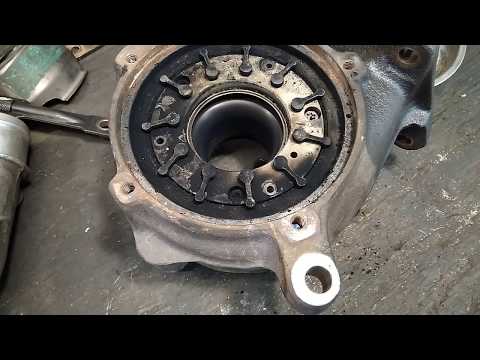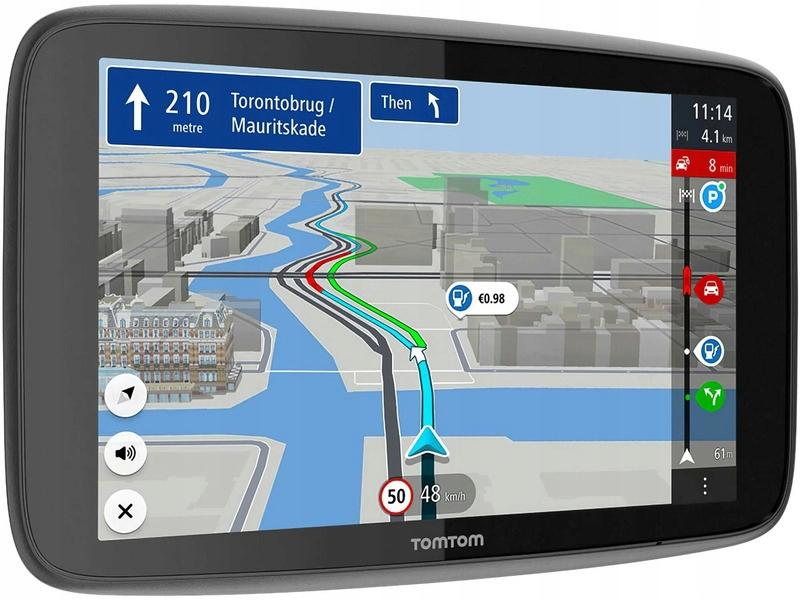
P0234 Turbocharger / supercharger overcharge status code "A"
Content
Trouble Code P0234 OBD-II Datasheet
Turbocharger / Supercharger Overload Condition "A"
What does this mean?
This Diagnostic Trouble Code (DTC) is a generic transmission code. It is considered universal as it applies to all makes and models of vehicles (1996 and newer), although the specific repair steps may differ slightly depending on the model.
DTC P0234 indicates that the powertrain control module (PCM) detects a dangerously high boost pressure from the engine forced air intake system. Boost levels in excess of recommended levels can compromise the structural integrity of the engine.
Typically, an engine relies on the vacuum created by the downward movement of the piston to draw air and fuel into the engine. A supercharger or turbocharger is an air compressor used to increase the amount of air and fuel going into the engine. This is known as "forced induction" which allows a lower fuel consumption engine to produce power normally available in a much larger engine.
Mechanical devices used in forced induction fall into three categories: positive displacement (Roots type), centrifugal, and turbo. Root chargers and centrifugal superchargers are belt driven, while the turbocharger relies on exhaust pressure to operate.
A positive displacement blower or positive displacement blower is located at the top of the inlet. A centrifugal compressor is very similar to a rotary air conditioner compressor and is located on the driver's side in front of the engine. The turbochargers are located in line with the exhaust system.
As the boost pressure increases, the load on the engine increases. Charge pressure limits are recommended for your engine to eliminate the possibility of engine component failure. The P0234 code is set when these limits are violated and should be corrected as soon as possible to prevent damage to the engine or transmission.
Turbochargers rely on exhaust gas pressure to rotate the turbine blades fast enough to create air pressure higher than atmospheric pressure. However, they have an inherent lag when the exhaust pressure is not enough to turn the turbocharger fast enough to build up pressure. Depending on the type of unit used, the turbo engine requires between 1700 and 2500 rpm before it starts spinning.
The turbines rotate at around 250,000 rpm when fully charged. The boost pressure increases with increasing engine speed. A bypass valve is installed to regulate the boost pressure and prevent overload. Most modern turbines have an internal bypass valve and an external drive. The turbocharger has a piston rod from the actuator to the wastegate. The air pressure in the intake manifold flows to the top of the wastegate. As the boost pressure increases, it exerts force on the spring in the actuator, which keeps the wastegate valve closed. The higher the pressure rises, the more it suppresses the spring, which causes the wastegate to open and the exhaust gases are directed away from the turbo blades and prevent further boosting.
Wastegate pressure control adjusts boost levels at specific rpm. To do this, the computer uses barometric or MAP sensors, engine and transmission temperature sensors, knock sensors, and intake pressure sensors to determine the amount of wastegate opening required to achieve the best boost level.
The computer uses a solenoid, stepper motor, or pulse modulator to regulate boost levels. By adjusting the pressure in the wastegate actuator, different levels of boost can be obtained.
Symptoms of error P0234
The symptoms displayed for the P0234 code will depend on the cause of the overload:
- The Service Engine or Check Engine light will illuminate.
- You will experience a loss of strength.
- The engine may show signs of overheating.
- The transmission may show signs of overheating and abrupt gear changes.
- Additional codes associated with the status set by P0234 may be present to help identify the cause. Codes are available for all electrical components used by the engine control computer to control boost levels.
- The engine may show signs of premature ignition in the form of detonation.
- The engine may display misfiring.
Causes
DTC P0234 indicates that the turbocharger boost pressure is out of specification for the vehicle. In other words, the engine control unit has detected that the boost pressure coming from the engine's forced air supply system is too high, which may even compromise the functionality of the entire engine. This pressure is recorded by the corresponding MAP pressure sensor, whose data is used by the engine control unit to regulate the pressure load transmitted to the pistons inside the cylinders. This code does not signal a specific component failure, only a pressure problem. The reason why the diagnosis in this case is not the easiest.
Possible reasons for this DTC:
- Instead of additional DTCs associated with an overload condition, it is safe to say that the problem is mechanical. Most likely a wastegate has been triggered.
- The wastegate is either stuck closed, causing the turbocharger to rotate higher than normal, resulting in excessive acceleration.
- The stem from the wastegate actuator to the wastegate on the turbocharger is bent.
- Hose came off wastegate or boost regulator.
- Clogged supply to the boost controller or from the controller to the wastegate.
- Dodge Trucks with Cummins Diesel Engine there is a particular problem. They work fine, but the check engine light comes on and a P0234 code is set at idle, however the light goes out after a few minutes at cruising speed. The digital boost control gauge is connected to the MAP sensor, which periodically fails at idle, but does not set a code. Replacing the MAP sensor corrects this.
Diagnostic steps and possible solutions
Inspect the wastegate actuator link to the turbocharger. Repair if it is bent.
Inspect the hoses, including the hose from the boost controller to the wastegate actuator and supply lines to the boost controller. Look for cracks or disconnected hoses. Pull out the ends of the hoses and look for clogged lines.
Connect a vacuum pump to the wastegate controller. Pump it slowly while observing the actuator stem. Pay attention to the amount of mercury required to activate the rod and whether the rod moves at all. Refer to your service manual for the vacuum required to operate the wastegate. If it is out of specification, replace the actuator.
If the stem does not move or the wastegate actuator cannot maintain vacuum, replace the actuator. If it holds vacuum but cannot move the stem, the internal bypass valve in the turbocharger will get stuck. Remove the turbocharger and repair the wastegate.
Start the engine and disconnect the supply hose from the boost control. Inspect it for obstructions and boost pressure. Install the hose and disconnect the hose on the opposite side of the boost control. Boost pressure must be present - otherwise replace the boost controller.
Frequently Asked Questions (FAQ)
What does code P0234 mean?
DTC P0234 indicates an overload of turbocharger A.
What causes the P0234 code?
A malfunction of the turbocharger and related components is the most common cause of this code.
How to fix code P0234?
Carefully inspect the turbocharger and all items associated with it.
Can code P0234 go away on its own?
Usually this code does not disappear on its own.
Can I drive with code P0234?
Driving with error code P0234, while possible, is not recommended as it can have serious consequences for the vehicle's stability on the road.
How much does it cost to fix code P0234?
Depending on the model, the cost of replacing a turbocharger in a workshop can reach 3000.
Need more help with your p0234 code?
If you still need help with DTC P0234, post a question in the comments below this article.
NOTE. This information is provided for informational purposes only. It is not intended to be used as a repair recommendation and we are not responsible for any action you take on any vehicle. All information on this site is protected by copyright.

6 comments
Then
After remap, code P0234 appears. If the remap is good, can the high pressure pump sensor be to blame?
anonym
P00af increase turbocharger / compressor drive
Pressure control A - characteristics of the control unit
Mercedes w204 blueefficiency 2010 where you can start looking for fault
Esther Papp
I would like to know that the Nissan plathfinder turbo was sent for overhaul and the error code p0234 comes back. What could it be?
Bodea Pantelemon
I changed the turbine and the variable geometry on a Ford focus 2 from 2009 1,6 TDCI, a week later the CECHINGU came on and the test gave error P 0234 and P 0490, I don't know what would be the reason and the way to solve the problems?
Paul
In the city it grinds well but on the motorway at 120 it loses power. When checked by the mechanic he gives us error P0234. What could it be?
V70 1,6drive -10 Monday copies No1
What exactly is meant by A or B?? Does Inge understand...
Koder som P0234 Turbocharger/Supercharger A overboost Condition
(I.e.
P049C EGR B flow exessive detected
(I.e.
P042E EGR A control stuck open
Someone in the know who might kindly consider setting aside some time to help a girl in need with a "Monday copy" to try to understand/fix the error??????
Thank you please in advance